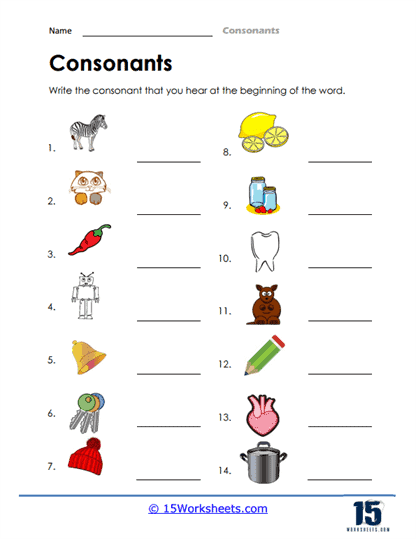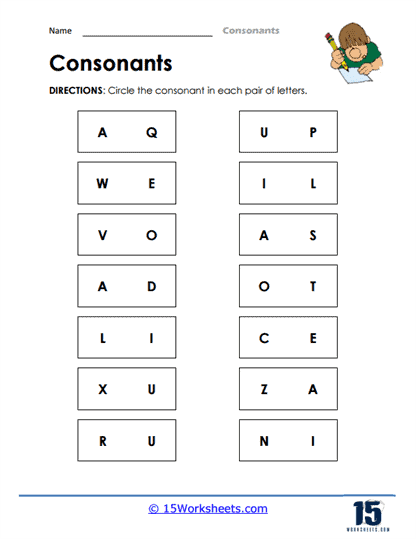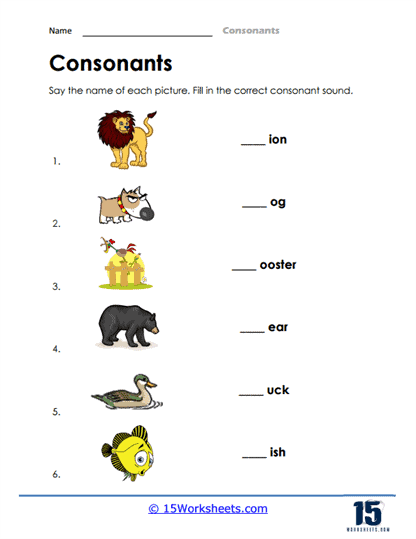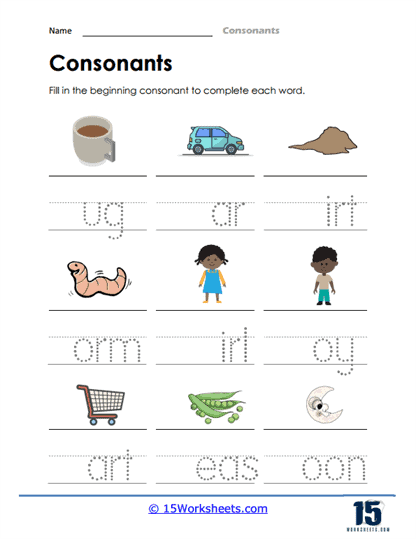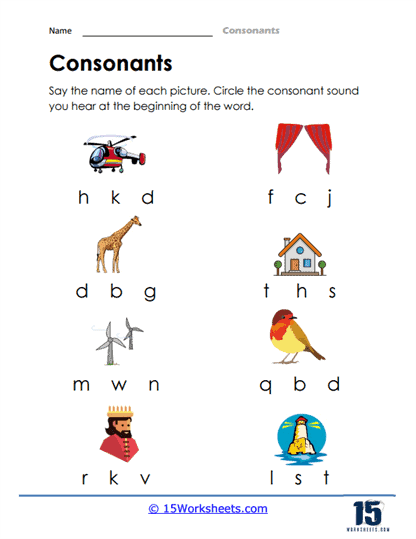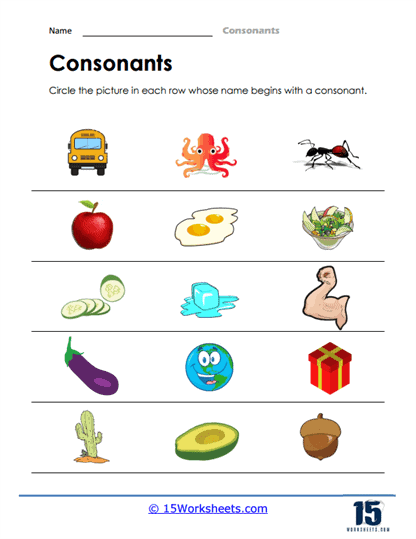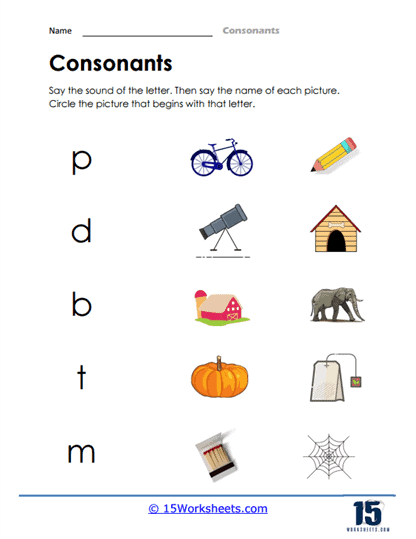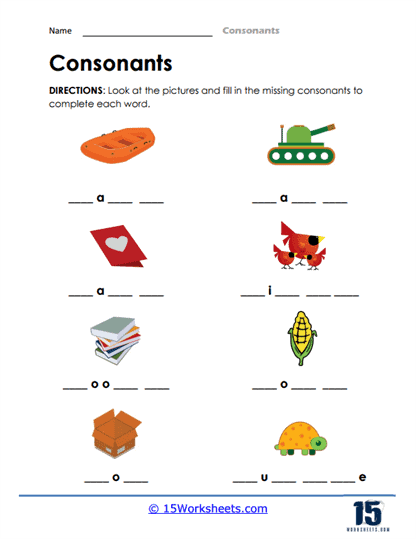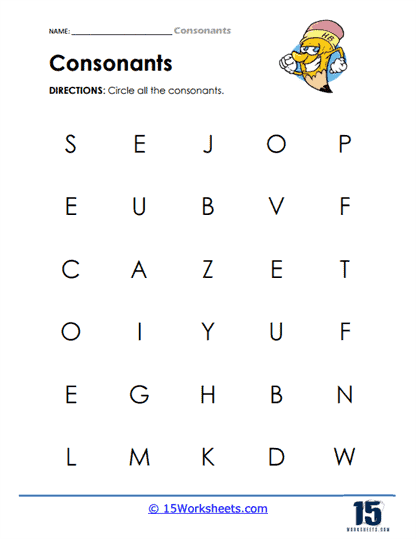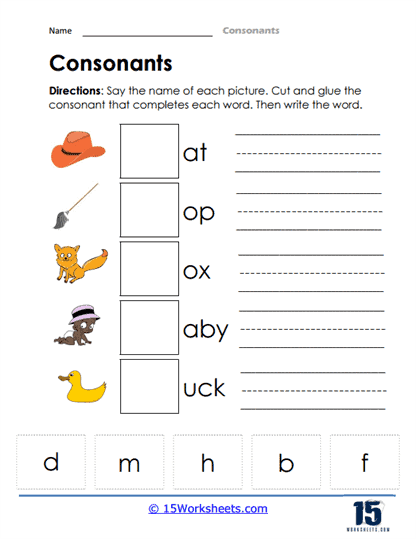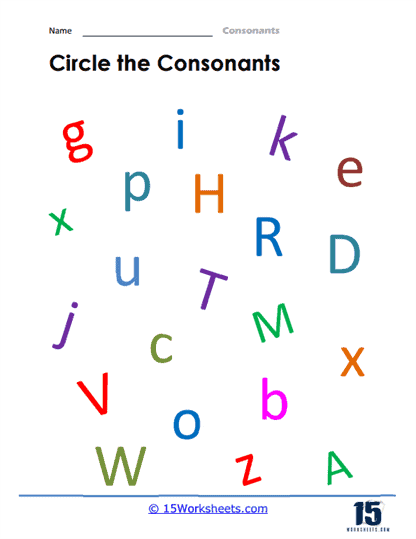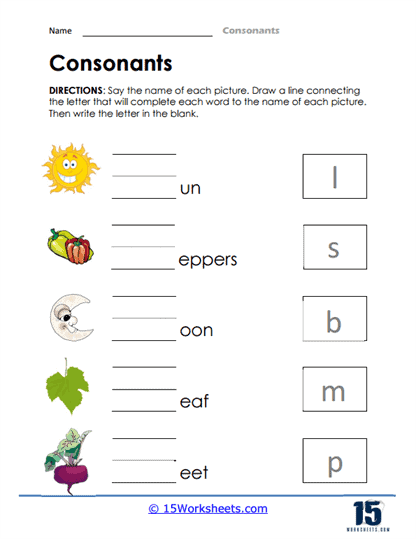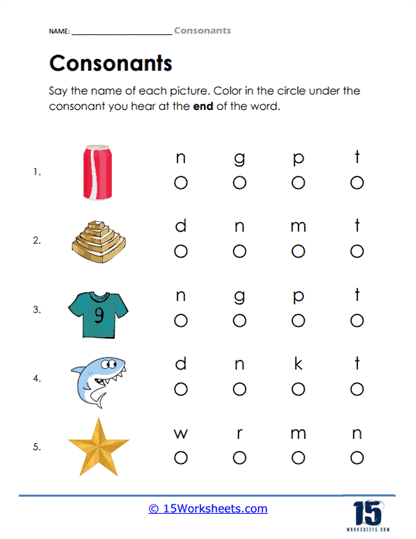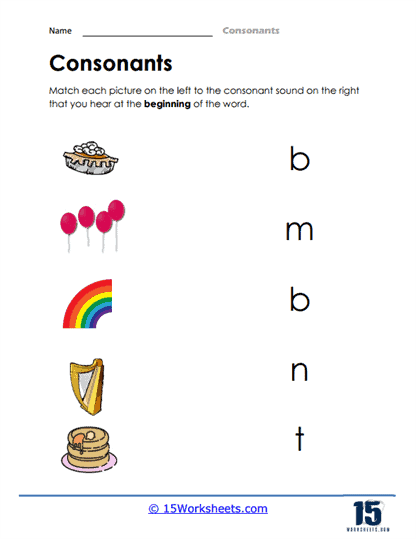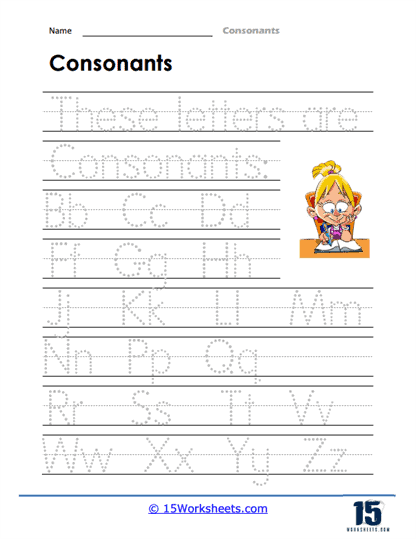Consonants Worksheets
All About These 15 Worksheets
This collection of Consonants worksheets is a comprehensive resource designed to help students develop a solid understanding of consonants—the fundamental building blocks of the English language.
These worksheets are thoughtfully crafted to immerse students in the world of consonants, enabling them to understand, practice, and apply this crucial phonetic skill effectively. Consonant recognition and mastery are essential for reading fluency, word decoding, and spelling accuracy, making this resource an invaluable tool for educators and young learners.
What are Consonants Worksheets?
Consonants Worksheets are educational resources designed to help students practice and learn about consonants, which are the letters of the alphabet that represent non-vowel sounds. These worksheets often include various activities, such as matching, sorting, or writing exercises, that focus on the sounds of the consonants and their usage in words.
Consonants are a class of speech sounds in spoken language that typically involve a constriction or closure of the vocal tract at some point during their production. They are one of the two primary types of sounds in spoken languages, the other being vowels. Consonants are represented by letters in written language.
In English, there are 21 consonant letters – B, C, D, F, G, H, J, K, L, M, N, P, Q, R, S, T, V, W, X, Y, and Z. However, the number of consonant sounds (or phonemes) in English is higher than the number of consonant letters, as some letter combinations create distinct sounds (e.g., “ch” in “chair” and “sh” in “ship”).
Consonant sounds can be classified based on different criteria, such as:
Place of Articulation – The location in the vocal tract where the constriction or closure occurs, such as bilabial (lips), alveolar (the ridge behind the upper front teeth), or velar (soft palate).
Manner of Articulation – The way the airflow is obstructed or modified during the production of the sound, such as stops (complete closure and release of airflow), fricatives (narrow constriction causing friction), or nasals (airflow through the nasal cavity).
Voicing – The involvement of the vocal cords during the production of the sound, such as voiced consonants (vocal cords vibrate) or voiceless consonants (vocal cords do not vibrate).
Consonants play a crucial role in language and communication, as they help form the structure and pronunciation of words, and contribute to their meaning. Understanding and mastering consonants is essential for developing reading, writing, and speaking skills.
The Importance Of Consonants
Consonants are the speech sounds produced by blocking or restricting the airflow in some way as it passes through the vocal tract. Recognizing and understanding consonants is essential for several key reasons:
- Word Decoding: Consonants are the backbone of many words. Proficiency in recognizing and pronouncing consonants is crucial for decoding words accurately, improving reading fluency.
- Spelling Proficiency: Understanding consonants aids students in accurately representing these sounds with letters in their writing, contributing to improved spelling skills.
- Vocabulary Growth: Proficiency in consonants enables students to learn and understand a broader range of words, enriching their vocabulary.
- Reading Comprehension: Recognizing consonants enhances reading skills, allowing students to decode words quickly and accurately, which in turn leads to better comprehension of texts.
- Early Literacy Intervention: Identifying and addressing difficulties in consonant recognition and pronunciation early can prevent reading challenges and promote early literacy success.
This collection of Consonants worksheets is an invaluable resource that equips educators to guide their students toward phonemic excellence. By engaging with these worksheets, students not only develop a strong foundation in consonants but also set the stage for successful reading, spelling, and overall literacy. This collection empowers educators to nurture young learners on their journey to becoming confident and proficient readers and communicators.

